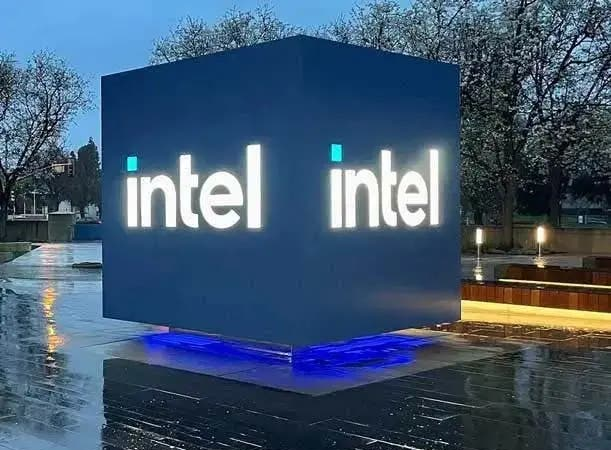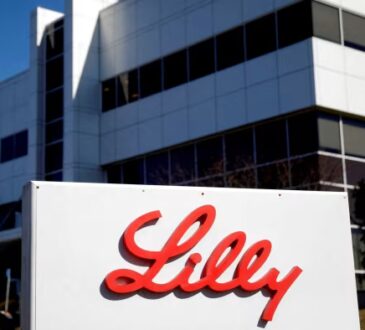
The upcoming Intel Partner Alliance changes include a move to a two-tier member system from the program’s traditional three-tier system, an increase in the number of points partners can earn on Intel products, the introduction of volume-based point multipliers for high-priority products as well as the removal or consolidation of some program elements.

Intel said it’s increasing investments in partners in the second half of the year to give them “more value” and “more benefits” as part of a “simplified” Intel Partner Alliance program the semiconductor giant plans to launch this October.
The comments were made by Andy Marsee, general manager of Intel Partner Alliance, in an exclusive interview with CRN, shortly before the company announced several changes coming to the partner program in an email to partners last Wednesday. Marsee didn’t specify by how much Intel is increasing partner investments relative to the first half of the year. Intel said in January that it had boosted partner funding by an unspecified amount over its 2024 investment level while cutting direct partner coverage.
[Related: Intel’s Earnings Bombshell: Layoffs, Foundry Warning And Other Things To Know]
The changes to the four-year-old Intel Partner Alliance program were unveiled before Intel Global Channel Chief Dave Guzzi on Monday announced that he is gaining additional responsibilities with his new title as vice president of global go-to-market, enterprise and partner. His previous title was vice president of global partner scale.
The upcoming Intel Partner Alliance changes include a move to a two-tier member system from the program’s traditional three-tier system, an increase in the number of points partners can earn on Intel products and other activities, the introduction of volume-based point multipliers for high-priority products as well as the removal or consolidation of some program elements, among several other things.
Intel’s Marsee emphasized to CRN that while it’s moving partners from a three-tier system that consists of Member, Gold and Titanium tiers to a two-tier system that will consist of the base Partner and premium Prestige tiers, no partner will lose benefits as a result.
He said “no partner left behind” is Intel’s mantra with these changes.
“Whether you were Gold or whether you were a Member in the current structure, in the new structure you’re going to get more benefits [and] more value, even if you’re in that second Partner tier,” Marsee said.
The chipmaker also announced marketing-related changes, such as a new MDF model going into effect next year and the availability of Intel’s brand to top-tier partners for co-marketing purposes. These changes are happening as the parent division of Intel’s global partner organization, the Sales and Marketing Group, begins to outsource many marketing functions to global consulting giant Accenture.
The partner program changes come as Intel CEO Lip-Bu Tan is pushing for larger changes, including a 15 percent reduction in its workforce and the removal of many management positions, in the latest attempt to turn around the company, which has recently come under increased scrutiny from President Trump.
Bloomberg reported Thursday that Intel is in talks with the Trump administration for the U.S. government to take a stake in the company.
Partners Praise Intel For ‘Large Investments,’ ‘Moving Faster’
Some Intel partners lauded the changes in the program and the way the chipmaker works with partners, key efforts by the company to keep close ties with partners as Intel rivals are also moving to step up their channel efforts.
“[Intel is] making some pretty large investments, and I feel like we see them at just about every conference, and they are definitely consistent,” said Chris Bogan, vice president of sales at Houston, Texas-based systems integrator Mark III Systems.
Camden Haley, vice president of production management at Merrimack, N.H.-based solution provider Connection, told CRN before the program changes were announced that Intel’s channel organization has been moving faster since Tan became CEO in March.
“They are moving faster, making decisions very quickly, paying attention to feedback and moving very fast on that feedback,” said Haley, whose company ranked No. 33 on CRN’s 2025 Solution Provider 500 list. “I’ve been really impressed with them this year and happy with our partnership with Intel. So time can only tell depending upon what impacts are going to trickle down to the partner community.”
Kent Tibbils, vice president of Fremont, Calif.-based distributor ASI, said the Intel Partner Alliance program has been the company’s “strong suit,” reflecting its “commitment to the channel.”
He urged Intel not to lose sight of issues that matter to smaller partners.
“They need to focus on not just the bigger customers, but on their breadth of customers, and the things that matter there a lot of times are product availability and price,” he said.
Intel partners told CRN they have been taking note of Intel’s rivals making significant investments in their own partner programs this year to ramp up competition in the channel.
AMD, which hit 24.4 percent CPU market share against Intel in PCs and servers earlier this year, recently told CRN that it has increased its channel investment budget by more than 40 percent this year, with plans to grow its global partner coverage by roughly 20 percent and nearly double its channel staff by the end of 2025.
Qualcomm, on the other hand, told CRN earlier in the year that it is doubling channel funding and quadrupling its commercial channel team this year to grow its much smaller slice of CPU market share against Intel and AMD.
A senior executive at a solution provider, who asked not to be named in order to speak candidly, said he has witnessed AMD’s increased investments in the channel firsthand.
He contrasted this with the lower engagement he’s been getting from Intel since the chipmaker changed his sales representative roughly a year ago. Whereas his previous representative used to get on calls to talk Intel business roughly every two weeks, the frequency with the new representative has decreased to about every two months.
This, according to the executive, makes it harder for him to get interested in any changes Intel is making to its partner program.
“It’s real clear to me what I get from AMD because they’re here telling us about it all the time and want to engage with customers in the field, and so that’d be the difference,” said the solution provider executive.
Intel Partner Tier Changes
Like other partner programs, Intel’s tier system offers partners at each tier a certain level of benefits commensurate with the revenue they make selling Intel products among other requirements for things like training.
Intel is also reducing the number of roles in Intel Partner Alliance from eight to five. The company said it’s combining a few roles to simplify the experience for partners. The OEM and ODM roles will merge into the new Builder role while the Solution Provider and Service Integrator roles will become the Solution Integrator role.
In addition, Intel Partner Alliance will eliminate the FPGA Design Services role as part of Intel’s plan to sell a majority stake of its Altera programmable chip business to private equity firm Silver Lake, which is expected to close by the end of September. Altera runs its own partner program.
Points Cap Raised, Volume-Based Multipliers Introduced
Marsee said Intel will raise the cap for points partners can earn by selling Intel products and participating in other activities. According to the updated Intel Partner Alliance website, the new cap for both Partner and Prestige tiers is 300,000 points quarterly per earnings category.
“We’re actually increasing the points per unit incentives for our partners across the board, starting with the refresh in [the fourth quarter],” he said.
With the new volume-based point multiplier incentive, Marsee said Intel will increase the number of points partners can earn by selling high-priority products like the Intel Core Ultra 200 processors and the devices they power.
“We absolutely want to drive adoption and pull-through of that product, even with OEM systems,” he said.
With the volume-based multiplier, partners who sell certain levels of high-priority products will increase the multiplier for the base number of points they earn, according to Marsee.
“Points is one of our most scalable financial incentives in the program that scales to thousands of partners,” he said.
ASI’s Tibbils hailed the raising of point caps as good news for partners, particularly smaller ones.
“Those are good things for the smaller resellers because the problem in the past was that a lot of them couldn’t get enough points or couldn’t accumulate the points fast enough to ever be able to really use them,” he said.
New Benefits Opened For Prestige And Partner Tiers
Marsee said partners in the new high-end tier, Prestige, will gain access to the Intel corporate brand for co-marketing, something that has historically been reserved for large partners such as OEMs like Dell Technologies and HP Inc.
The company will also offer the ability to build custom training programs for Prestige partners who commit to having 100 or more employees partake in the opportunity. Marsee said that this new benefit will allow participating partners to align themselves “more intentionally” with Intel on training and go-to-market efforts.
Partner-tier members, on the other hand, will get a listing on the Intel Partner Showcase storefront, a benefit that has not been available to the current base-level Member tier.
This will open the opportunity for such partners to “build a simple storefront” and generate customer leads through an “industry-standard partner directory,” according to Marsee.
All partners will continue to receive access to confidential information—with proper non-disclosure agreements in place—and developer tools through Intel Partner Alliance.
Intel To Consolidate, Remove Some Aspects Of Program
Marsee said Intel plans to consolidate or remove some aspects of Intel Partner Alliance with the upcoming program refresh, but in cases of removal, these things will either be replaced by other elements of the program, or they weren’t widely used and therefore don’t warrant replacement.
For instance, Marsee said it plans to remove the product and solution offerings feature from the Intel Partner Showcase storefronts because it found that 90 percent of customer leads for partners were coming from partner storefronts and not the individual offerings each partner had listed. He added that the process for partners to list offerings and the work Intel had to do in managing them “was pretty labor-intensive.”
On the other hand, Intel plans to end support for the Intel Partner Alliance Communities, which include Intel Cloud Insider, Intel Network Builders and IoT and Edge Solutions.
While a fourth community around FPGAs is going away because of Intel’s upcoming majority stake sale of Altera, the company said it will replace the other communities with a program element that was introduced last year called Partner Enablement Zones.
Partner Enablement Zones round up resources, tools and benefits that are meant to help partners sell Intel-based offerings across its product portfolio.
“This is really replacing those communities, which were harder to manage and didn’t properly represent the full portfolio of Intel’s business,” Marsee said.
On the consolidation front, Marsee said Intel plans to combine multiple satellite programs to “streamline the value exchange.” These programs include several Accelerator initiatives as well as Market Ready Solutions and RFP Ready Kits, among others.
Intel To Fully Move to Outcome-Based MDF Model In 2026
Marsee said Intel will move to an outcome-based MDF model in 2026 after it recently started to roll out the model as an option for some partners.
According to the updated Intel Partner Alliance website, MDF will be invite-only for the Partner tier and available for all Prestige-level partners.
Guzzi teased this “significant shift” in how Intel handles MDF for partners in a January interview with CRN, saying at the time that it will shift the impetus on generating customer leads from Intel to its partners.
In the traditional compliance-based model, Intel reimburses partners for spending a pre-approved amount of money on marketing activities related to Intel’s products.
With the new outcome-based model, partners put more focus on joint business goals and outcomes, like generating customer leads, for pre-approved co-marketing and co-selling opportunities.
“It’s radically simpler, and it also gets Intel and our partners focused on measuring the results, the effectiveness [and] the outcomes of the investment rather than the details of how we got there,” Marsee said.




